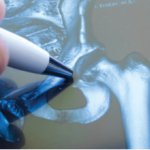
Dr. Singh
Dr. Singh also points out that with newer medications for weight loss now becoming available to more patients, this recommendation may be updated in future guidelines, if the evidence supports that.
Conditional recommendations: In patients with poor glycemic control of diabetes mellitus, consider delaying arthroplasty to improve glycemic control. In patients with nicotine dependence, consider delaying arthroplasty for nicotine cessation or reduction.
The link between diabetes and poor wound healing is well established, and patients with poor glycemic control have a higher risk of poor outcomes after arthroplasty. The guideline authors found a likely benefit of delaying arthroplasty to improve glycemic control. However, they were careful to recommend overall improvement, not achievement of a specific threshold.
On a similar note, Dr. Hannon says, “Decreased angiogenesis and decreased blood flow to the skin in active smokers leads to increased risk of wound complications and possibly infection.” The literature review found that delaying surgery while patients eliminate or reduce their nicotine use may benefit patients overall.
For this and other potentially modifiable risk factors, clinicians should educate patients about these risks and provide appropriate support (e.g., nicotine reduction strategies). “It is worthwhile to take more of a collaborative approach with these risk modifications, also working with the patient’s primary care provider,” says Dr. Hannon.
However, nicotine cessation or glycemic thresholds should not be absolute criteria for moving forward with arthroplasty. Dr. Singh says, “Many people face a lot of challenges in trying to combat [nicotine dependence, obesity and diabetes] and find solutions. They have a lot of coexisting medical problems, a lot of pain and emotional issues.”
An equity aspect applies to these discussions as well. Dr. Hannon notes that payers sometimes cite clinical guidelines in their policies as a justification to deny surgical approvals, but the authors don’t want these guidelines to reduce potential patient access.
Dr. Goodman points out, “Patients [who are Black] are more likely to smoke, have high BMI and have diabetes, so exclusionary criteria using weight, smoking and blood sugar would likely exacerbate the existing racial disparities in access to arthroplasty.”
Data from the 1999–2014 National Health and Nutrition Examination Survey (NHANES) demonstrated that fewer Black patients and fewer patients from households with lower incomes would be eligible for arthroplasty if rigid criteria were applied, including a BMI of <40, an HbA1c level of <8% or complete nicotine cessation. “We feel that discussing the specific risks that apply in a specific setting with our patients is a more appropriate and helpful approach than using absolute and rigid exclusions,” says Dr. Goodman.

